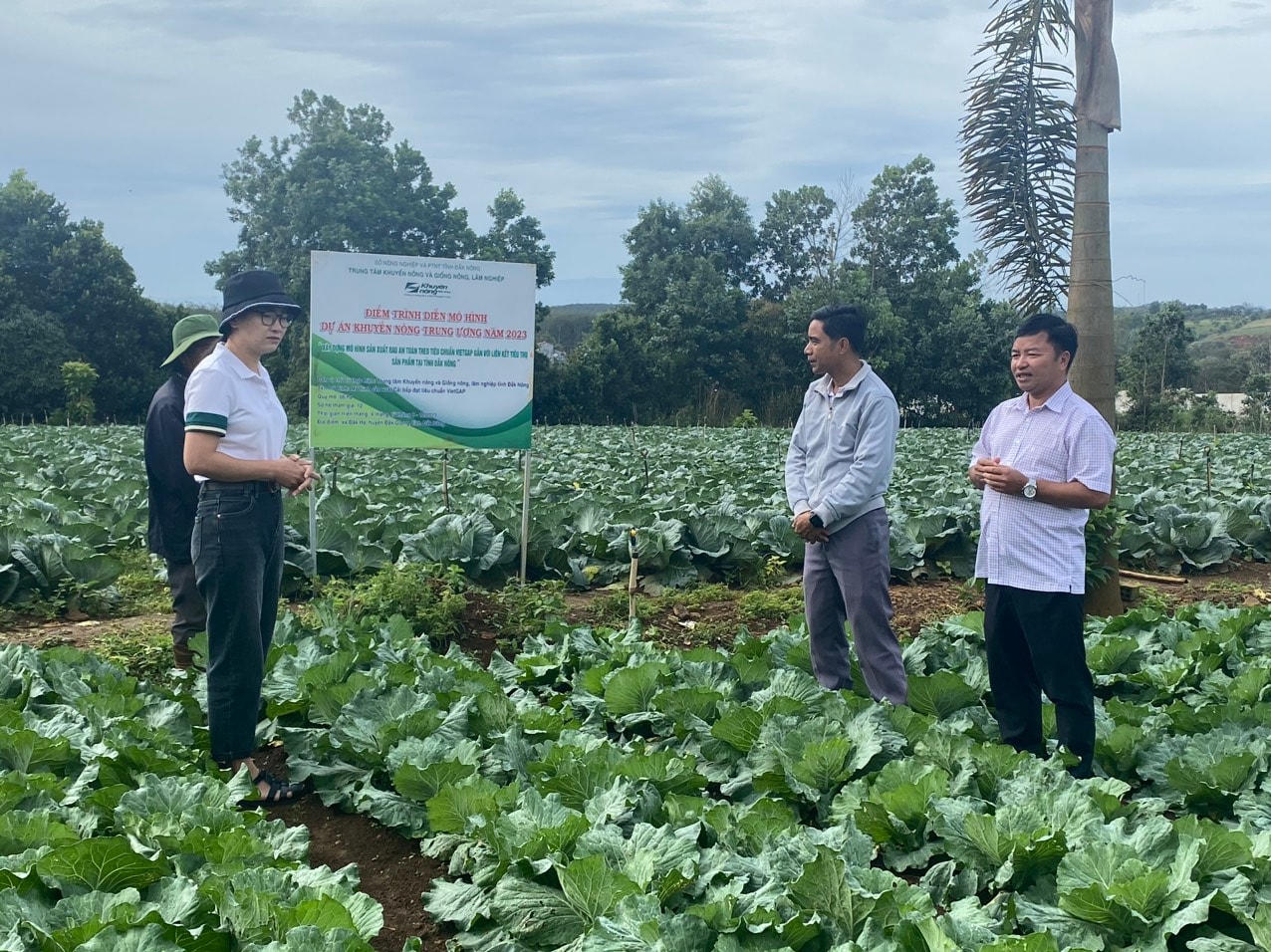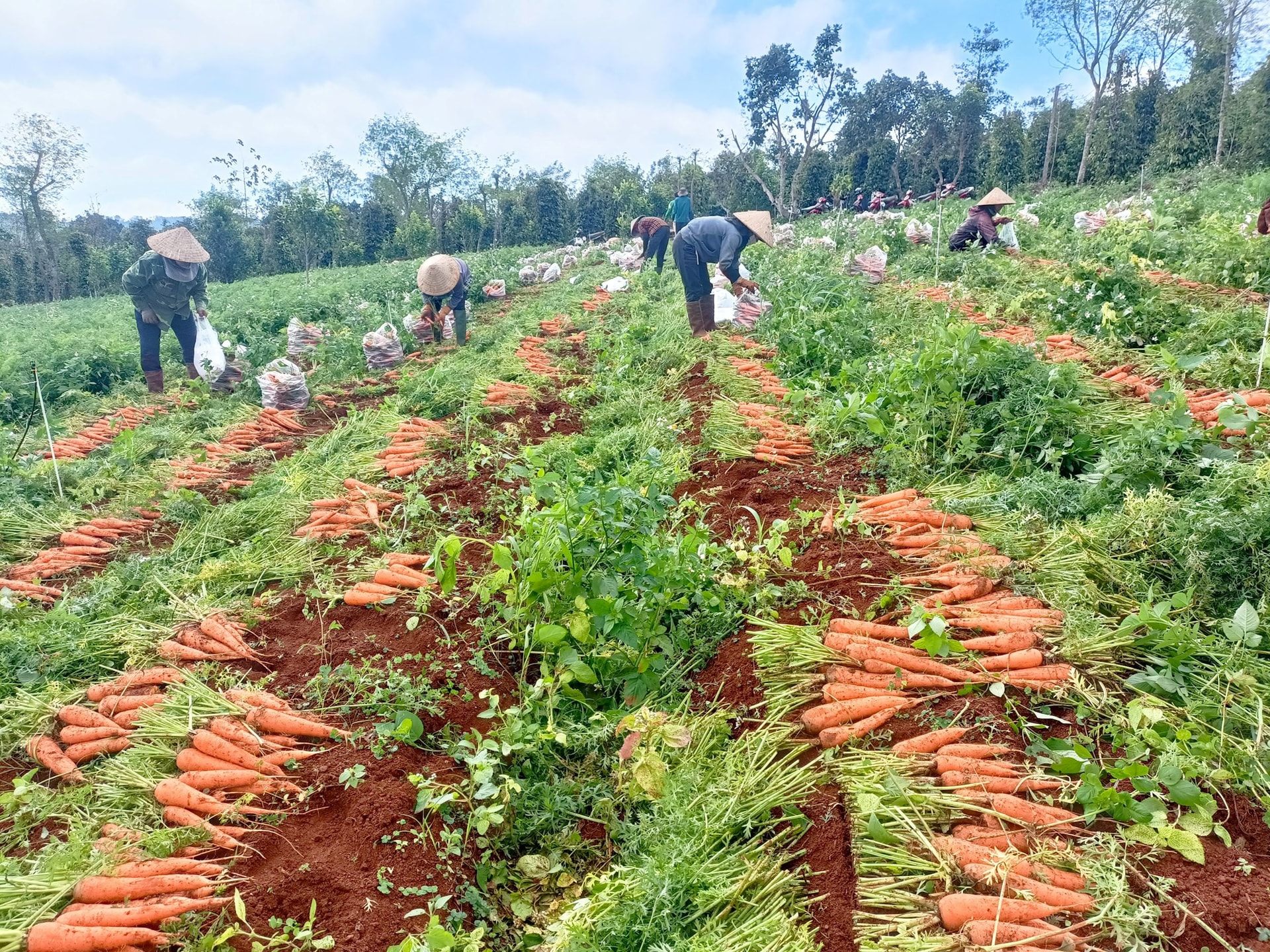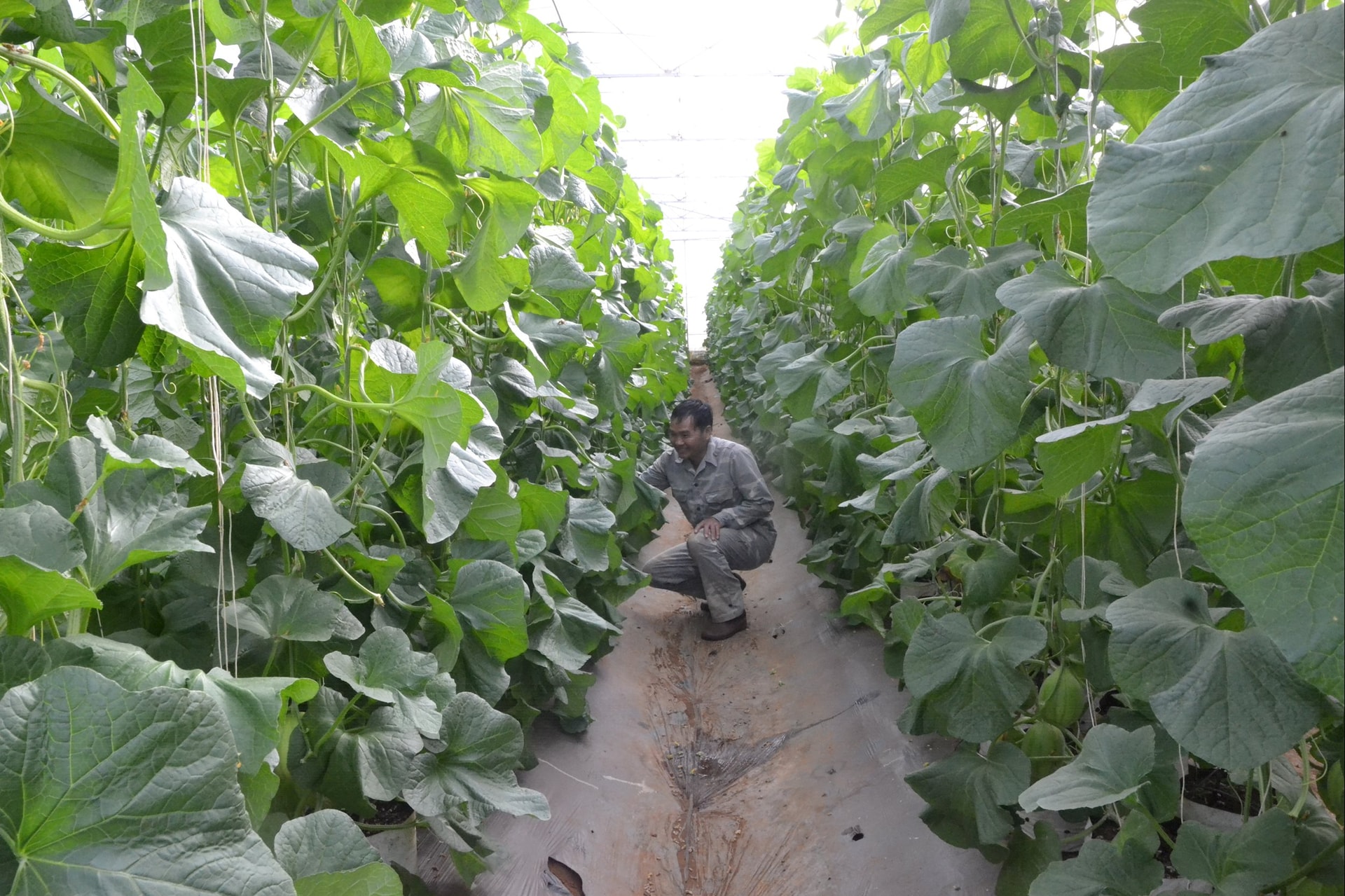
High income from VietGAP vegetables
With an altitude of 600 - 900 m above sea level and fertile soil conditions, remote communes such as Quang Son, Quang Khe, Tuy Duc, Thuan Hanh... are relatively favorable for growing vegetables, tubers, and fruits for domestic consumption and export.
Every year, in these localities, people have planted about 7,150 hectares of vegetables and tubers of all kinds. Of which, the winter-spring crop is 1,730 hectares, the summer-autumn crop is 3,960 hectares, the autumn-winter crop is over 1,460 hectares, with an annual output of about over 100 thousand tons/year.

Previously, the production of vegetables, tubers and fruits of the people of Quang Son commune was mainly spontaneous and small-scale, leading to instability in productivity and quality. Faced with that reality, the Thinh Phat Agricultural - Medicinal - Service - Trade Cooperative has linked up with more than 90 farming households to plant 100 hectares.
In 2022, the Cooperative was supported by the Dak Nong Agricultural Extension Center - Agricultural and Forestry Seeds (old) to build a model of a cabbage production chain according to VietGAP certification and link product consumption with CJ Foods Vietnam Company.
Since then, the cooperative’s products have been purchased by the company to make kimchi for export to Korea. “Kimchi made from Quang Son cabbage has the same flavor and deliciousness as kimchi imported from Korea.
Therefore, CJ Foods Vietnam Company always hopes that the cooperative and farmers of Quang Son maintain the area to provide stable raw materials," said Ms. Nguyen Thi Toan - Director of Thinh Phat Cooperative.
Ms. Toan added that although the cabbage here is not yet famous, it is highly appreciated for its sweetness, aroma, and crispness. It is very suitable for preparing dishes that suit local tastes, especially for making traditional Korean kimchi. The quality of the cabbage here is due to the altitude, climate, and suitable weather.
In particular, this is a new production area, not polluted by fertilizers and pesticides. Moreover, Thinh Phat Cooperative also complies with VietGAP standards, minimizing the use of chemical pesticides, mainly using biological pesticides.
Since then, Thinh Phat Cooperative has connected to turn cabbage from the red soil of Quang Son into Korean kimchi products. CJ Foods Vietnam's kimchi stands out with its characteristic sour and spicy flavor and delicious crunchiness, not only suitable for Korean taste but also appealing to Vietnamese consumers.
According to Ms. Nguyen Thi Thao - Head of the Dak Glong - Gia Nghia Regional Agricultural Technical Station, although the climate in remote and border communes is quite similar to the wards and communes that strongly develop green vegetables in the province such as: Xuan Truong - Da Lat, Xuan Huong - Da Lat, Duc Trong, Hiep Thanh, Tan Hoi... Therefore, Lam Dong needs to have ideas and plans to promote the development of green vegetables in the communes in a synchronous and effective manner.
Developing sustainable specialized areas
Currently, Lam Dong border communes have formed a number of concentrated vegetable, root and fruit growing areas. In the production areas, people are supported by many organizations, programs, projects, agricultural production according to standards, supported in transferring science and technology, controlling food safety, etc.

The provincial agricultural sector believes that with the current development trend, remote communes and border areas of Lam Dong have many conditions to expand acreage, grow high-quality vegetables, and strongly develop high-tech vegetable products. From there, there is an opportunity to promote potential, natural advantages and strategic roles and positions; develop a circular economy associated with a green and sustainable agricultural economy.
According to Mr. Nguyen Van Chuong - Director of Lam Dong Agricultural Extension Center, in the coming time, the province will continue to plan more production areas in some communes and wards specializing in vegetables, tubers and fruits. At the same time, cooperative groups and cooperatives with common interests will be established so that farmers can focus on connecting and finding output more easily.
The provincial agricultural sector will also support units and farmers to continue shaping and managing the vegetable and fruit supply chain at each stage, ensuring increased value for each link in the chain.
This is a premise for people to have the opportunity to access science and technology; communes develop logistics models, warehouse infrastructure and services in key agricultural areas, associated with multimodal transport and integrated e-commerce.
“This is a sustainable direction, contributing to solving existing problems in quality standards, production processes, small-scale production, fragmentation and product consumption chains in remote and border communes of the province today,” Mr. Chuong added.
Lam Dong currently has more than 107 thousand hectares of high-tech agricultural production; more than 149.7 thousand hectares certified for safe and sustainable production; 960 export growing area codes and 33 packaging facility codes for key agricultural products, meeting export requirements.
Source: https://baolamdong.vn/lien-ket-trong-rau-huong-phat-trien-ben-vung-389227.html







![[Photo] Cat Ba - Green island paradise](/_next/image?url=https%3A%2F%2Fvphoto.vietnam.vn%2Fthumb%2F1200x675%2Fvietnam%2Fresource%2FIMAGE%2F2025%2F12%2F04%2F1764821844074_ndo_br_1-dcbthienduongxanh638-jpg.webp&w=3840&q=75)







































































































Comment (0)